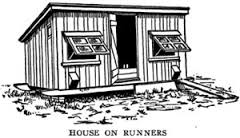April
10, 1935 We had a terrible dust
storm. It got so dark by noon that we
lit the lamps and burned them the rest of the day. We went to Meade.
Dust storms year after year wore a person down. Many people left for California during the 1930s
(the “Okies”) on rumors of good work to be found there. But the Siemens were tougher and stayed
put. Cornelius was wise enough not to
borrow money against their farm, so he did not have mortgage payments to make
and there was no bank threatening to foreclose on them.
During the World War I, North American farmers had broken
a lot of new ground to feed the world, and they continued to do so during the
good years that followed in the 1920s.
But unbeknownst to them, they were using farming practices that turned
the soil to powder. When it was wet, as
it was during the 1920s, this was not a problem. But for eleven consecutive years, from 1930
to 1940, Kansas experienced below average rainfall. When the vegetation and crops dried up, great
clouds of dust blew away the precious topsoil, leaving a hardpan on which
nothing would grow.
The dust storms would roll in as a huge black cloud. Flocks of birds would fly ahead of the cloud,
trying in vain to escape it. Day would
turn to night. No one had seen anything
like this, and people were terrified that the world was ending. In hindsight that seems rather silly, but if
we had experienced, I have no doubt that we would have felt the same.
In the house, they would stuff wet rags in the cracks and
cover windows with wet sheets to try to stop the dust. But the powdery soil still managed to
penetrate, and after the storm they would sweep and even shovel the dust out of
the house. Everything – the kitchen,
stove, pots and pans, the dining room table, the chairs, the beds, clothes –
was covered with dust. Dust would pile
up along fences and drift around buildings like snow. Animals could walk over the dirt and get out
of pastures and corrals. Roads would
drift shut with dirt. There was a lot of
static electricity in the air due to all the fine particles, so cars would not
start. It must have seemed like the
world truly was ending.
In 1932, the Siemens did not finish the harvest because
it was not worth cutting the stunted wheat.
And 1933 was just as dry. Many
farmers did not even plant a crop because there was no moisture in the
ground. Babies’ weak lungs could not
expel the dust, so they got something called dust pneumonia, and some even died
from it. The Siemens had three little
children at this time, Henry age 4, Elmer 3, and Anna 1; so they must have
worried what would happen to them.
Imagine having to light kerosene lamps at noon because the
dust completely blocked the sun. Imagine
having one crop failure after another.
Imagine feeding tumbleweeds to the cattle because there was no feed to
buy for miles and miles around (and very little money to buy it with). Imagine the discouragement of fighting the
dust day after day to keep the house clean.
Yet the Siemens survived this dust storm and many others.




































